Beef Cattle Discovery - Judging - Market Steers
Beef Cattle Discovery - Judging - Market Steers
Key Points for Judging Market Steers
- Evaluate market steers first fromt the ground up and then from the rump (rear) forward
- Rank the traits for their importance.
- Evaluate the most important traits first.
- Eliminate any easy placings in the class.
- Place the class based on the volume of the important traits
Ranking of Traits for Judging Market Steers
- Degree of muscling
- Degree of finish (amount of fat cover)
- Growth capacity
- Soundness and structural correctness
- Balance
- Frame size
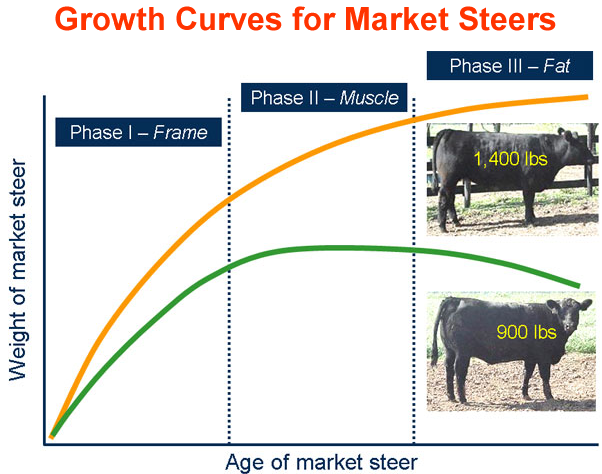
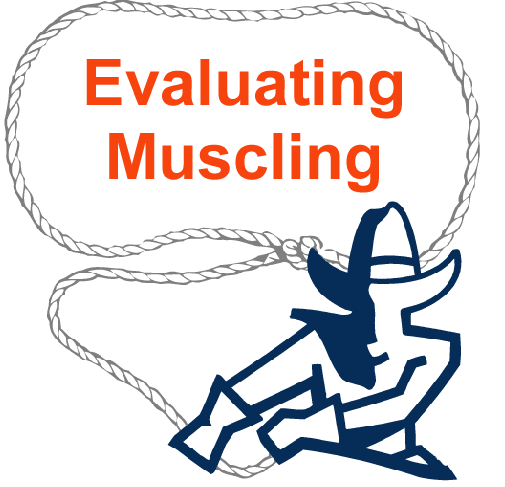
Evaluating Degree of Muscling
Degree of muscling is best determined by evaluating:
- Thickness through the center of the quarter.
- Width between the rear feet when the steer stands and walks.
- Shape over the top (or loin).


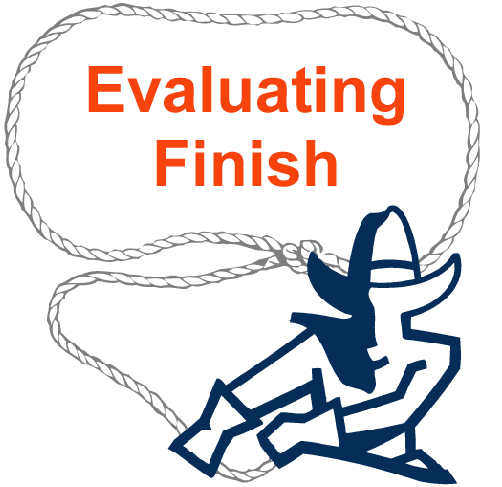
Evaluating Degree of Finish
Fat is first deposited from front to rear, and then from top to bottom. The order of areas to consider when evaluating degree of finish are:
- Shoulders
- Over the ribs
- Top line
- Around the tail head
- Flanks and underline
- Brisket and cod (udder)
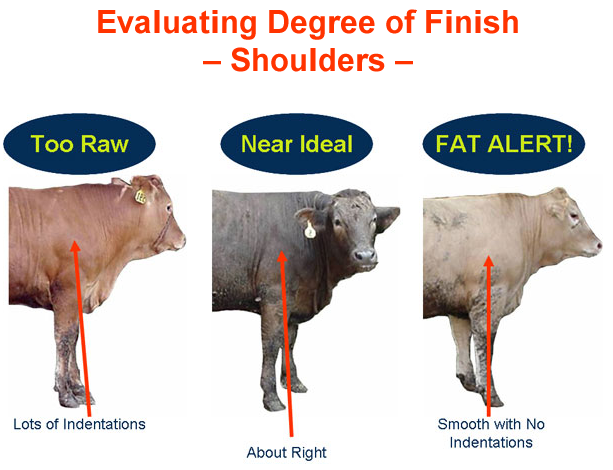
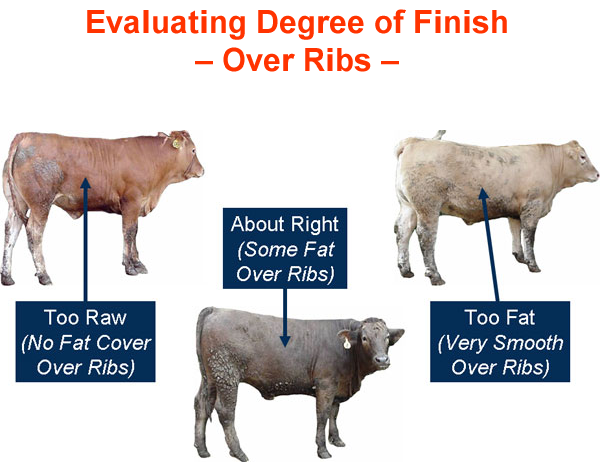
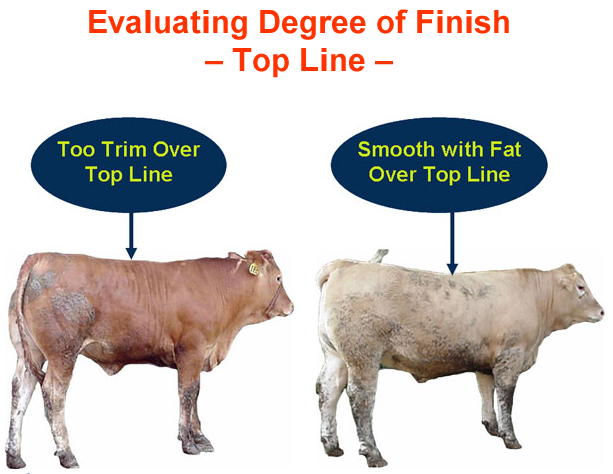
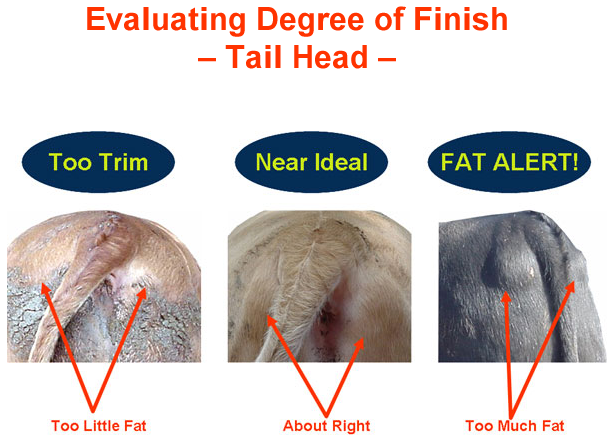
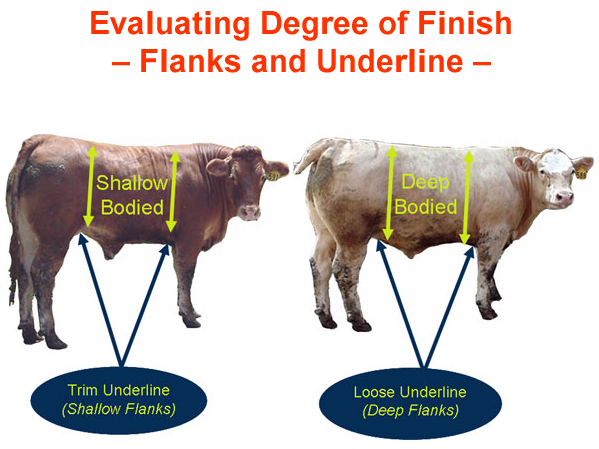
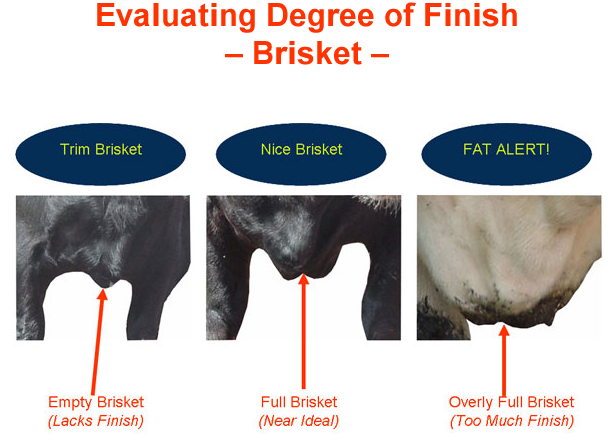
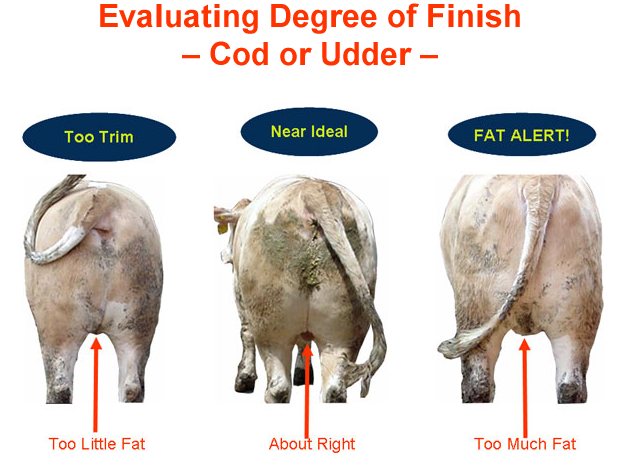
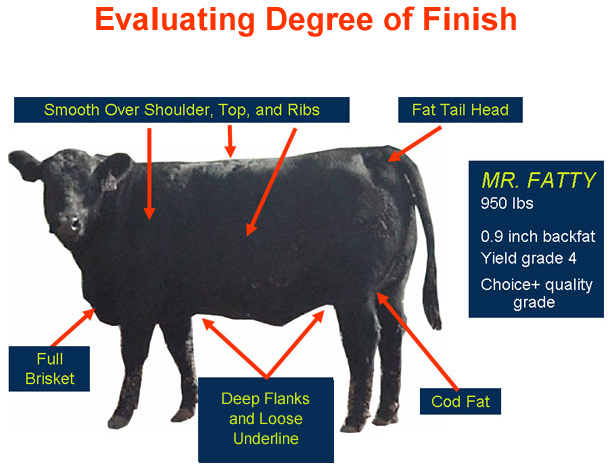
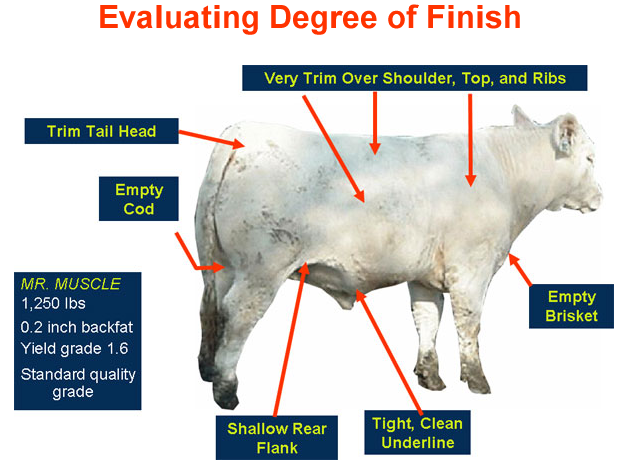

Evaluating Growth Capacity
Market steers with a high capacity for growth will be:
- Wide through the chest.
- Wide between their feet when walking or standing.
- Uniform in body depth.
- Open through their rib.
- Long bodied.

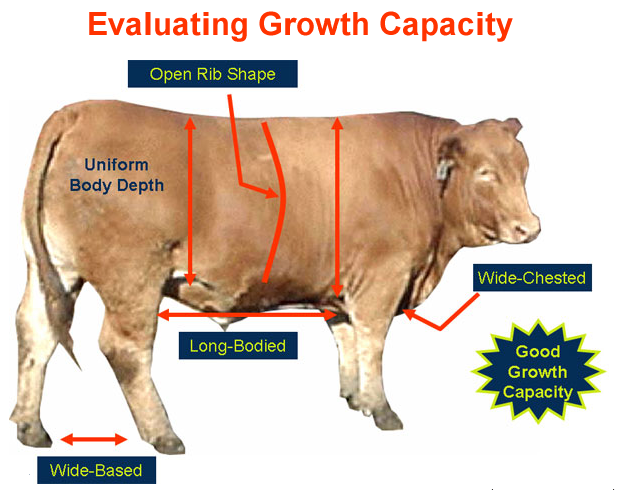
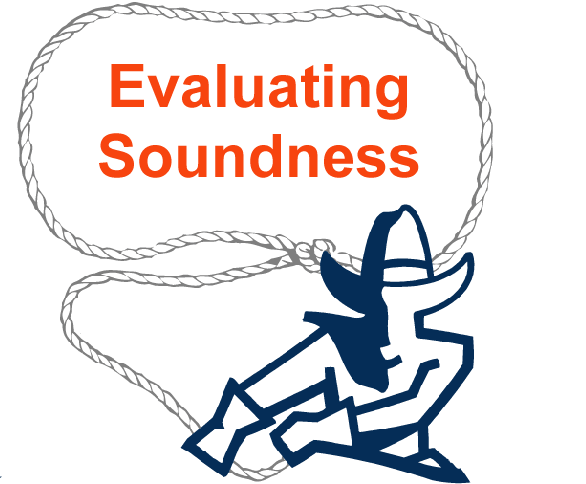
Evaluating Soundness and Structural Correctness
Sound and structurally correct market steers will have:
- Flexible, clean, flat joints
- Long powerful strides.
- Strong pasterns
- Good set to hocks and knees
- Big feet that set flat on the ground.
- Long, straight top-line
- Long level rumps.
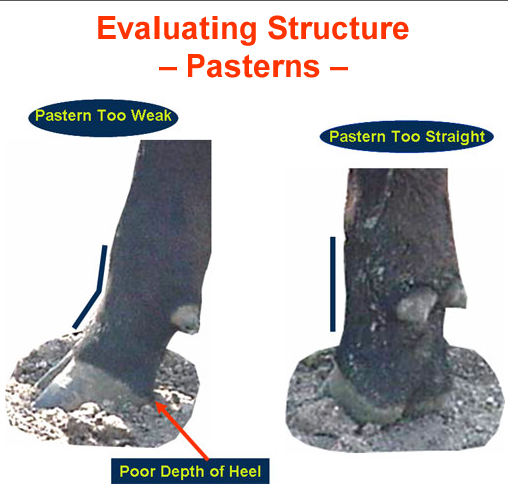

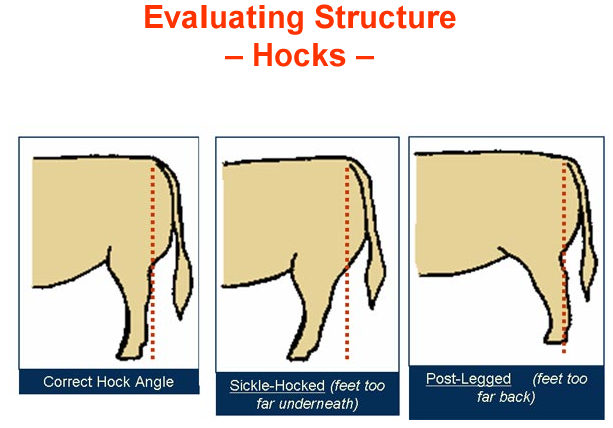

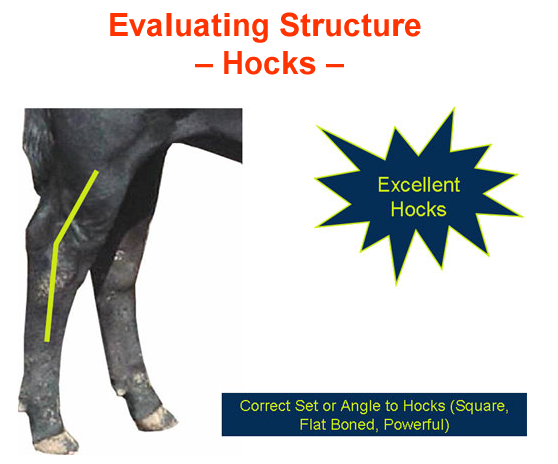
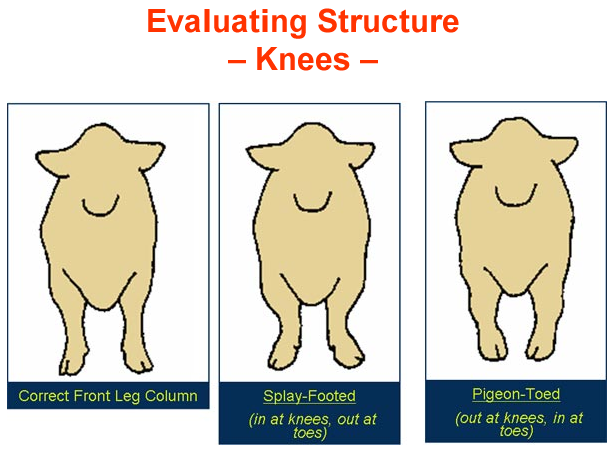
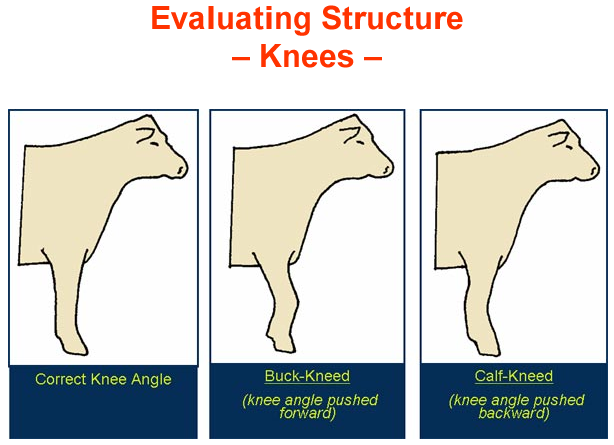
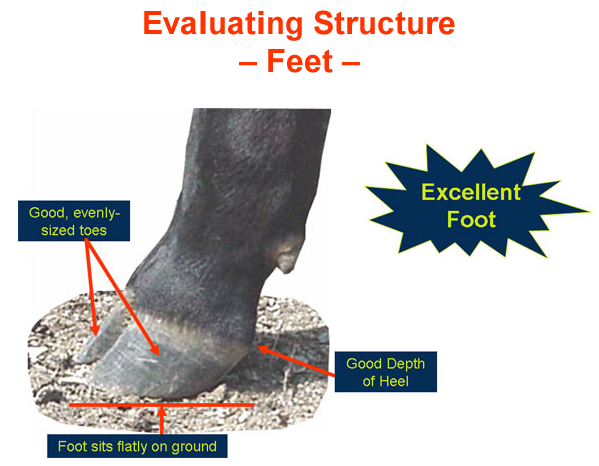
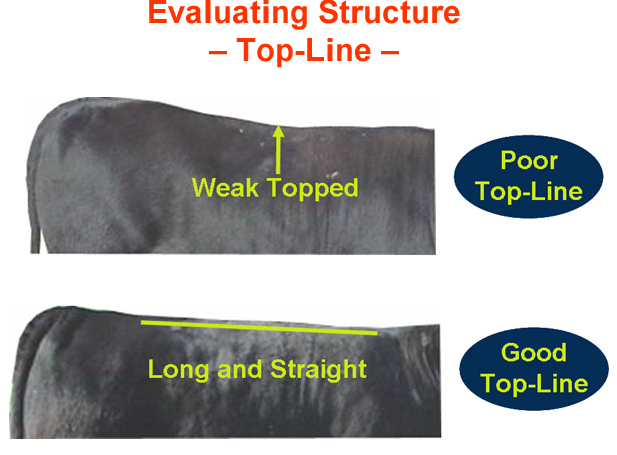

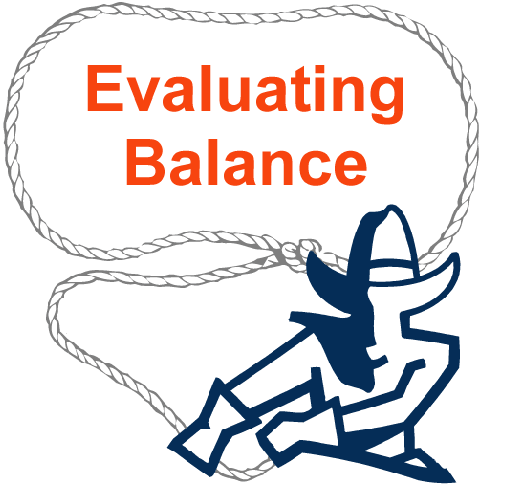
Evaluating Balance
Balance in market steers refers to:
- Having the correct proportions of body width, body depth, and body length.
- Having good blending of body width, body depth, and body length
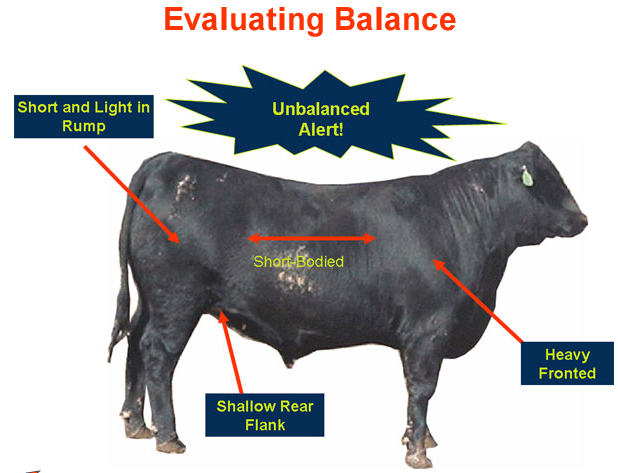
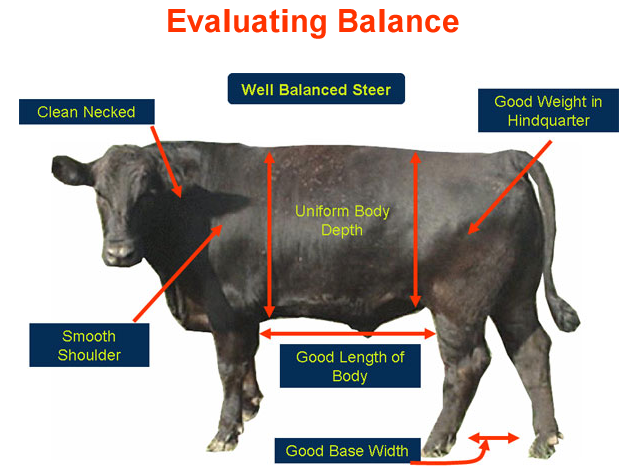

Evaluating Frame Size
The optimum steer for today's market should be medium framed and finish at about 1,200 pounds.
- Large framed market steers will get to big before developing adequate finish.
- Small framed market steers will be early maturing and get too fat before they reach optimum market weight.
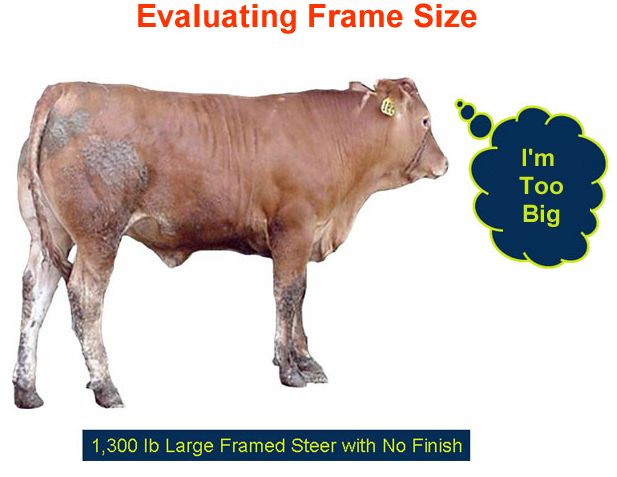

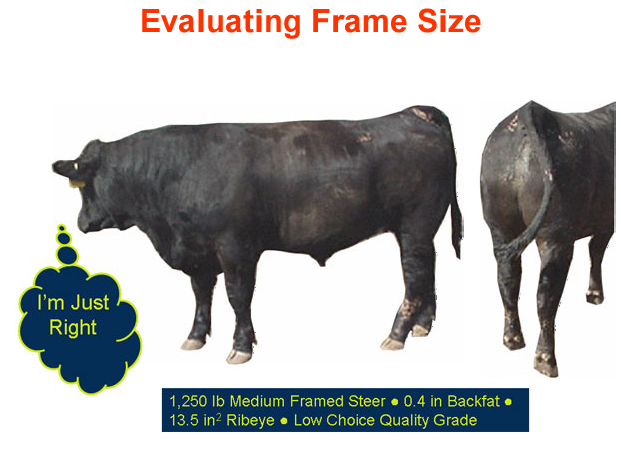
Final Tips for Judging Market Steers
- Remember what the most important traits are
(don't sweat the small stuff) - Know what "correct" looks like.
- Practice your judging skills
(look at lots of market steers).
